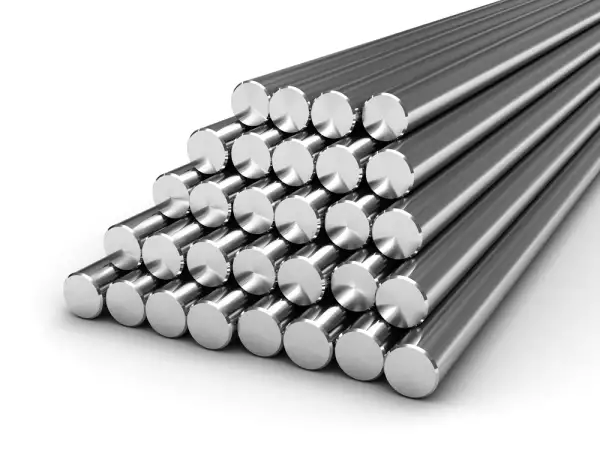Basic concepts
When building structured cabling systems (SCS), data transmission networks and LANs, as well as other information technology objects, many electricians regularly raise questions about grounding design. So that there are no uncertainties in these questions, we introduce the basic concepts and definitions in this field of knowledge.
In accordance with the international and Russian regulatory documents, there are two large classes of grounding: protective and functional grounding. You can also use the terminology (working or information grounding). Based on these factors, the grounding buses or conductors are marked as PE - protective grounding and FE - functional grounding.
We will use the basic normative document for an electrical engineer, namely, "Electrical Installation Code" (EIC, p. 1.7.29): Protective grounding is performed only for electrical safety purposes. When working with any electrical appliances, the personnel must be reliably protected from currents of low frequency and high amplitude, which pose a serious threat to the health and life of each person.
But the grounding, which we call Information (functional), provides the work of the electrical installation itself. That is, this grounding is not performed for the purpose of the object's electrical safety. In the development of such systems, one can start from the provisions of the EIC p 1.7.30.
The designer should know that you cannot use only information grounding, without the use of protective one.
Functional grounding works with high frequency and low amplitude currents and its task is to provide electromagnetic compatibility (EMC) and to protect against electromagnetic interference. HF currents of low amplitude do not directly threaten human life, but they can affect the quality of communication, for example, in SCS.
When defining FE tasks, we recommend that you follow GOST R 50571.22-2000 3.14 (707.2), which describes how to design grounding for information processing and communication systems.
Designers, as a rule, set strict requirements, under which there should not be even the smallest electrical potential on the body of the grounded device. It is this condition that is the guarantee of the normal functioning of communication equipment or information technology.
How to perform a functional grounding on the object?
For this purpose, it is necessary to use a grounding device for functional grounding together with functional conductors, which serve to connect the electrical receivers to the main ground bus. In this case, in accordance with GOST 50.571-4-44-2011 paragraph 444.5.1. all conductors of protective and functional grounding must be connected to this bus, and grounding devices of the appropriate purpose must be connected to each other. Such measures are necessary to exclude their influence on each other, which leads to a dangerous increase in voltage, the risk of damage to equipment and the risk of electric shock.
If you follow the provisions of GOST R 50571.21-2000 p. 548.3.1, then such a circuit solution can be realized: we combine functional and protective conductors (FE and PE, respectively) into a special conductor (PEF-conductor). And then we will attach it to the MGB, the so-called main grounding bus of the electrical installation. In the TN-S system, it is allowed to use PE-conductor of the power supply circuit of the information processing equipment for functional grounding.
Information grounding requirements
FE grounding is usually described by the requirements that are stated in the operating documentation of the manufacturer of the product (passport, technical conditions, technical regulations, etc.) or in departmental regulatory documents. For example, for products and systems of information and communication technologies (ICT), previously CTI means, we will use the provisions of the regulatory document CN 512-78 ("Technical requirements for buildings and premises for installing computer equipment"). Based on the instructions outlined there, we come to the conclusion that the grounding resistance of such equipment should not exceed 1 ohm. But if we design grounding for sensitive medical devices, this value will not be more than 2 ohms. ("Manual on the design of health facilities to SNIP 2.08.02-89").
Here, the so-called "radiated grounding scheme" is used, with a FE (low-resistance) grounding type, which leads to operation without electrical interference of the entire ICT complex.
In some cases it is also possible to use a modular deep ground electrode.
We introduce the concept of electromagnetic compatibility (EMC) of equipment and for this we turn to GOST R 50397-92 (IEC-50-161-90). EMC of equipment is considered in general, as the ability of the equipment to work qualitatively under the conditions of a given electromagnetic environment and not to create unacceptable electromagnetic interference to other devices and the electricity mains.
And further from these positions we will try to find out the causal relationship between FE - grounding, EMC and ICT safety.
The product or the ICT system will meet the requirements of the European EMC Directive EN 55022 if the following conditions are met:
- Electromagnetic radiation from active equipment to the environment does not exceed the norms of EN 55022
- The interference immunity of active equipment is not inferior to the norms of EN 55024
- The information cabling (ie the signal transmission medium) is correctly mounted and correctly grounded
Another important factor is the equalization of potentials between PE and FE grounding devices. It is this moment that determines the conditions for the electrical safety of personnel, as well as the noise immunity of ICT systems. How is this realized in practice? Usually, electricians mount an annular connecting conductor and connect it to the MGB.
If ICT products operate with a supply voltage of 5-12 V DC and are low-current, then parasitic signals, which arise precisely because of the potential difference and their fluctuations, are possible. The thing is that some ICT systems can perceive such a parasitic signal as information, as a result, there may be failures in communication networks, on servers, as well as disruptions in the operation of information and measurement systems. Such a situation is especially dangerous at critical infrastructure facilities.
Another aspect of the quality of FE - grounding is the informational security of products and ICT systems. The fact is that the side electromagnetic emissions and pick-ups (TEMPEST), along with EMC problems, create technical channels for the leakage of confidential information well known to information security specialists (IS).
This problem is especially relevant for computer equipment and data transmission systems involved in the processing of information that is considered confidential. But this is another story that belongs to the competence of FSTEC, Roskomnadzor and FSB.
Independent execution of FE-grounding
For highly sensitive medical devices in healthcare facilities, it is necessary to perform a separate functional grounding, which is neither connected with the protective grounding, nor with the system of equipotentials of the object.
For this functional grounding, the grounding device for the FE grounding must be placed separately (at least 15 meters) from the PE-grounding zone. It should be emphasized that such a scheme is a special (atypical) version of the grounding, and then higher electrical safety measures are applicable.
If the documentation for ICT equipment explicitly indicates the need for an independent information grounding, then in this case two independent PE and FE grounding buses are usually mounted in the equipment cabinet. In this case, the FE bus is completely isolated from the cabinet body, the signal conductor screens are connected to it.
In practice, the FE-conductor is connected with a copper cable (section from 1x25 mm2), which is reliably insulated with the FE-ground electrode. And this ground electrode should be moved to a safe distance (more than 20 m) from the PE-ground electrode. But the body of the cabinet where the equipment is located, must be grounded by means of the PE conductor to the potential equalization bus, which is connected to the MGB.
Conclusion
Nowadays, the use of modular-rod deep-laid ground electodes (up to 30 m and even more) and other technological circuits allows to design a repeated protective grounding PE at the entrance to the building equal in parameters of resistance to functional grounding. And in this case, there is no need to use separate grounding systems.
For more detailed acquaintance with the technology and tactical and technical characteristics of modular grounding systems, we invite those who are interesting to our Internet resource.
See also:
- Grounding. What is it and how to make it
- Lightning protection in a single-family house: standards calculations, examples
- What is a disspation array device and how it works?
- Useful materials for designers: articles, recommendations, examples
- Soil resistivity table
Related Articles:
 Why Cannot Vertical Earthing Devices Be Installed Close to Each Other?
Why Cannot Vertical Earthing Devices Be Installed Close to Each Other?
 Electrolytic Grounding in Permafrost Soils: Should Vertical of Horizontal Electrodes Be Used?
Electrolytic Grounding in Permafrost Soils: Should Vertical of Horizontal Electrodes Be Used?



